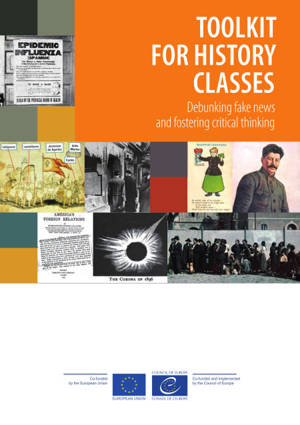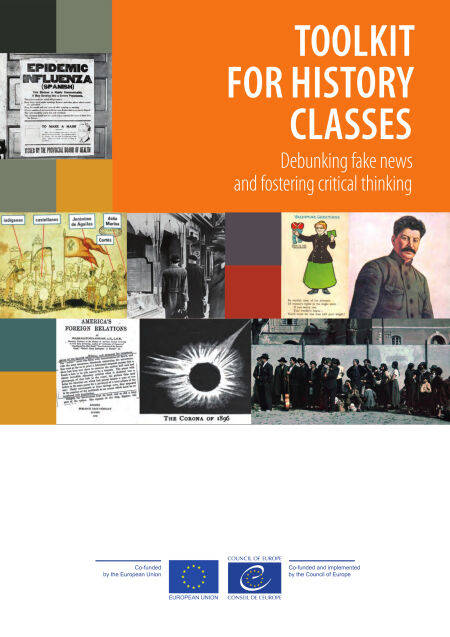
- Afhalen na 1 uur in een winkel met voorraad
- Gratis thuislevering in België vanaf € 30
- Ruim aanbod met 7 miljoen producten
- Afhalen na 1 uur in een winkel met voorraad
- Gratis thuislevering in België vanaf € 30
- Ruim aanbod met 7 miljoen producten
Zoeken
Toolkit for history classes E-BOOK
Debunking fake news and fostering critical thinking
María Sabiote González, Marcos Rebollo Fidalgo, Alfonso Cebrián Rey, Félix González Chicote, Cosme J. Gómez Carrasco, Juan Ramón Moreno Vera, Jairo Rodríguez Medina, Pedro Miralles Martínez
E-book | Engels
€ 15,99
+ 15 punten
Omschrijving
In a saturated and complex workd of information, how can students be helped to seek, evaluate and verify information?
Over the past two decades, the use of the internet and social media has enabled wider and faster access to information around the world. In doing so, however, it has also opened the door to misinformation, manipulation, fake news and political propaganda. Every industry, institution and individual person has had to adapt to this influx of unreliable information, and many organisations have begun to adopt new policies and issue recommendations on how to manage this new way of life.
The publication Toolkit for history classes – Debunking fake news and fostering critical thinking is a co-ordinated response by the European Union and Council of Europe to this phenomenon. The toolkit is a resource for history teachers to help their students learn how to deconstruct and question fake news through historical sources and topics that relate the past to the present. The toolkit aligns with the values and priorities of the European Union and Council of Europe, as both institutions have worked for many years to draw attention to the dangers caused by disinformation and the manipulation of history.
The toolkit was designed for teachers to show students not only how to recognise fake news when they see it, but also understand why it was created and become aware of the minority communities who are most often the target of this manipulated information.
Over the past two decades, the use of the internet and social media has enabled wider and faster access to information around the world. In doing so, however, it has also opened the door to misinformation, manipulation, fake news and political propaganda. Every industry, institution and individual person has had to adapt to this influx of unreliable information, and many organisations have begun to adopt new policies and issue recommendations on how to manage this new way of life.
The publication Toolkit for history classes – Debunking fake news and fostering critical thinking is a co-ordinated response by the European Union and Council of Europe to this phenomenon. The toolkit is a resource for history teachers to help their students learn how to deconstruct and question fake news through historical sources and topics that relate the past to the present. The toolkit aligns with the values and priorities of the European Union and Council of Europe, as both institutions have worked for many years to draw attention to the dangers caused by disinformation and the manipulation of history.
The toolkit was designed for teachers to show students not only how to recognise fake news when they see it, but also understand why it was created and become aware of the minority communities who are most often the target of this manipulated information.
Specificaties
Betrokkenen
- Auteur(s):
- Uitgeverij:
Inhoud
- Taal:
- Engels
Eigenschappen
- Productcode (EAN):
- 9789287195623
- Verschijningsdatum:
- 30/09/2024
- Uitvoering:
- E-book
- Formaat:
- ePub

Alleen bij Standaard Boekhandel
+ 15 punten op je klantenkaart van Standaard Boekhandel
Beoordelingen
We publiceren alleen reviews die voldoen aan de voorwaarden voor reviews. Bekijk onze voorwaarden voor reviews.











